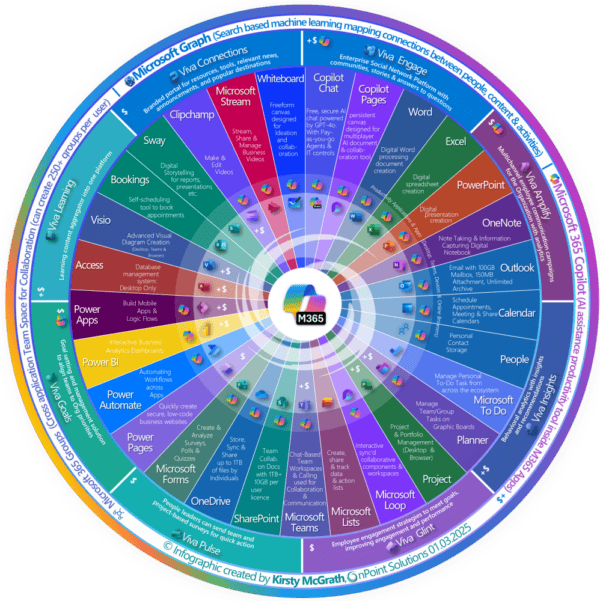During the last 2 weeks, I attended a SWIB panel with the wonderful Wendy Carstairs and Tijana Ellis. In the networking session, I was asked a question that has been on my mind and feel it’s time to discuss! How do I not get frustrated by Copilot? Specifically, when prompting Copilot, why do the outputs not frustrate me?
Using Copilot day-to-day
Copilot can easily frustrate people. We are hyping Copilot up to be the answer for everything. Got a challenge? A boring task or something that takes time? Copilot is “apparently” the answer. Whilst Copilot is very capable of handling tasks and supporting your productivity and creativity, how you use it changes your experience. Prompting is one of the fundamental parts of using Copilot. When we look back at historical interactions between humans and technology, if anything goes wrong, we tend to blame the technology. The famous “Task failed successfully” springs to mind from Windows XP days. But with Copilot it’s different. If the output is undesirable, the first thought isn’t about Copilot’s abilities, it’s about the prompt. Analysing your own prompts ensures you have instructed Copilot with a Goal, Context, Source, and Expectation. GCSE for short. And yes, this is one of the more painful acronyms from Microsoft as I thought GCSEs were staying in the past.
When using Copilot day-to-day, I take time when crafting prompts. I would rather spend 5 minutes building a prompt that can be reused again in the future, instead of lots of 10 second prompts because Copilot doesn’t understand the ask. The reason I don’t get frustrated with Copilot, put simply, is because my prompting may not be as good as it could be. And there is a handy trick to make sure the prompts are!
Can I prompt Copilot to prompt Copilot?
Many end users’ first major interaction with Copilot would be in Teams…most likely to summarise a meeting, or in Outlook to write a draft email. After an end user has been working with these prompts for a few weeks, they start to consider what the next steps are but are often thinking how and where to begin. A piece of feedback from end users who have just got their hands on Copilot – “I don’t know where to start”. Did you know Copilot can also be your prompting expert? This is where Copilot can get quite meta. Next time you’re prompting Copilot and are not getting the desired answer, ask Copilot to build you a better prompt.
“By asking me questions in an iterative process, until I say stop, can you help me make this prompt better? I am trying to do [x]”
Now Copilot will start asking you questions to understand your goals, context and expectations. Along the way, you can provide Copilot with sources, for example, emails from a colleague from the last 3 months.
What to do next time?
One of the reasons I love using Copilot is because there is no holding back. I can ask anything and be honest about my lack of knowledge for a topic area. For example, when I’m working on a project, asking Copilot, “Have I missed anything or are there any gaps in this project?”, adds credibility and an alternate perspective to what has been created so far. Copilot can make recommendations about the content and how to best deliver it, depending on the audience. Please don’t forget that Copilot is a new way of working and learning from each other for Copilot to become habitual is a powerful model for any user.
About The Author
Bradley Howe, Microsoft Modern Work Technologist | Office of the CTO










